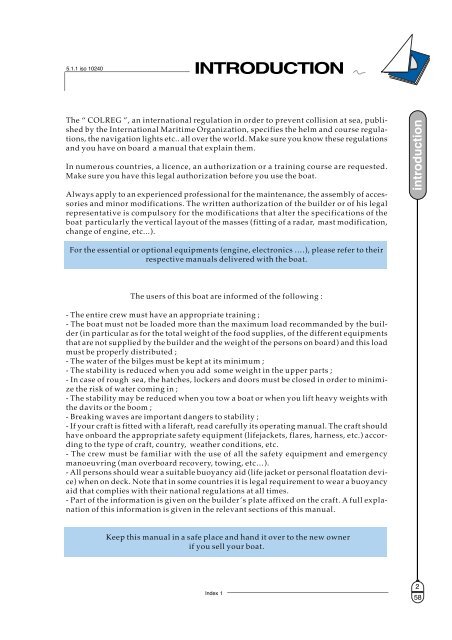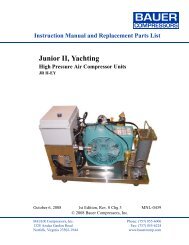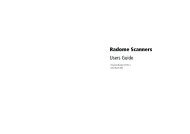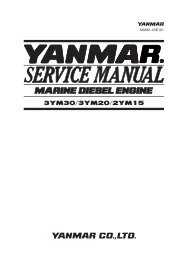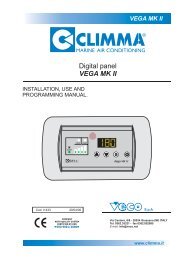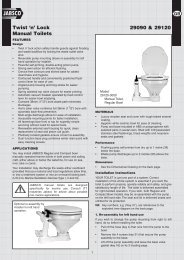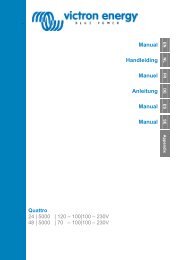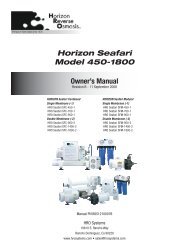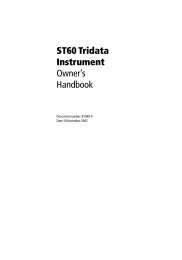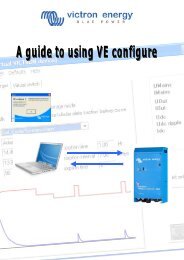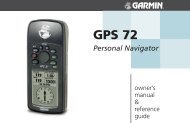Jeanneau 54DS Owner's manual - Zanshin
Jeanneau 54DS Owner's manual - Zanshin
Jeanneau 54DS Owner's manual - Zanshin
You also want an ePaper? Increase the reach of your titles
YUMPU automatically turns print PDFs into web optimized ePapers that Google loves.
5.1.1 iso 10240<br />
INTRODUCTION<br />
The “ COLREG ”, an international regulation in order to prevent collision at sea, published<br />
by the International Maritime Organization, specifies the helm and course regulations,<br />
the navigation lights etc.. all over the world. Make sure you know these regulations<br />
and you have on board a <strong>manual</strong> that explain them.<br />
In numerous countries, a licence, an authorization or a training course are requested.<br />
Make sure you have this legal authorization before you use the boat.<br />
Always apply to an experienced professional for the maintenance, the assembly of accessories<br />
and minor modifications. The written authorization of the builder or of his legal<br />
representative is compulsory for the modifications that alter the specifications of the<br />
boat particularly the vertical layout of the masses (fitting of a radar, mast modification,<br />
change of engine, etc...).<br />
introduction<br />
For the essential or optional equipments (engine, electronics ….), please refer to their<br />
respective <strong>manual</strong>s delivered with the boat.<br />
The users of this boat are informed of the following :<br />
- The entire crew must have an appropriate training ;<br />
- The boat must not be loaded more than the maximum load recommanded by the builder<br />
(in particular as for the total weight of the food supplies, of the different equipments<br />
that are not supplied by the builder and the weight of the persons on board) and this load<br />
must be properly distributed ;<br />
- The water of the bilges must be kept at its minimum ;<br />
- The stability is reduced when you add some weight in the upper parts ;<br />
- In case of rough sea, the hatches, lockers and doors must be closed in order to minimize<br />
the risk of water coming in ;<br />
- The stability may be reduced when you tow a boat or when you lift heavy weights with<br />
the davits or the boom ;<br />
- Breaking waves are important dangers to stability ;<br />
- If your craft is fitted with a liferaft, read carefully its operating <strong>manual</strong>. The craft should<br />
have onboard the appropriate safety equipment (lifejackets, flares, harness, etc.) according<br />
to the type of craft, country, weather conditions, etc.<br />
- The crew must be familiar with the use of all the safety equipment and emergency<br />
manoeuvring (man overboard recovery, towing, etc…).<br />
- All persons should wear a suitable buoyancy aid (life jacket or personal floatation device)<br />
when on deck. Note that in some countries it is legal requirement to wear a buoyancy<br />
aid that complies with their national regulations at all times.<br />
- Part of the information is given on the builder’s plate affixed on the craft. A full explanation<br />
of this information is given in the relevant sections of this <strong>manual</strong>.<br />
Keep this <strong>manual</strong> in a safe place and hand it over to the new owner<br />
if you sell your boat.<br />
Index 1<br />
2<br />
58


